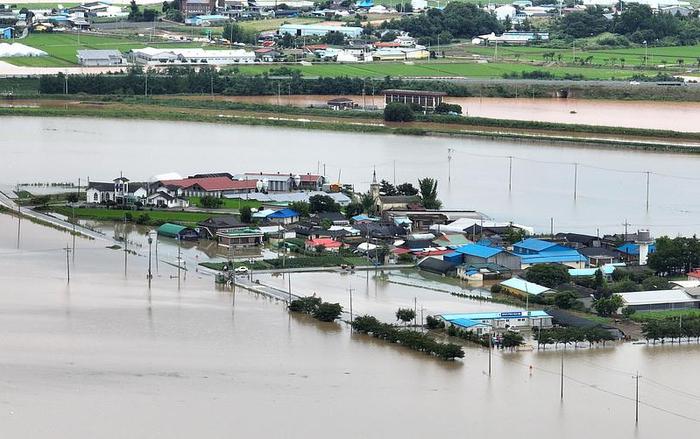
On July 17th, local time, heavy rains hit various parts of South Korea, with precipitation exceeding the highest record in the region. The torrential downpour caused waterlogging and mudslides on roads and buildings, leading to landslides and mountainous collapses.
The two-day torrential rain has resulted in four deaths, with over 2,700 people urgently evacuated. Railway, air, and sea transportation were also forced to cancel operations.
According to the Central Disaster and Safety Response Headquarters of the Ministry of Public Administration and Security in South Korea, as of 23:00 local time on July 17th, strong rainfall hit all parts of the country, with precipitation reaching approximately 20 to 80 millimeters per hour. By 22:00 on July 17th, Pusan, Gyeongnam North, Gyeongnam South, and Gyeongsangnam-do issued warnings for severe rain; other cities and prefectures also issued notices for rainy weather. The Central Disaster and Safety Response Headquarters issued a first-level response command for heavy rain at 15:00 local time on July 16th, a second-level command at 4:00 on July 17th, and raised the level of response to “serious” at 15:30 on July 17th.
As reported by the Pusan Observatory, by 22:00 on July 17th, the daily rainfall in Pusan reached 412.7 millimeters, setting a new record since records began in 1939. The rainfall in Ruisan City, Chungcheongnam-do, also reached 438.8 millimeters, setting a new record since records began in 1968. Additionally, the daily rainfall in Gucheng County, Tanyang County, and Rokpo City in Gyeongnam South surpassed 300 millimeters. According to the Korea Meteorological Administration, areas such as Shiryun City, Chungcheong Province’s Tangjin, Tianan, Yasan, and Lishan also experienced record-breaking rainfall on July 17th.
In Chungcheongnam-do, due to consecutive heavy rains, there have been fatalities. Around 6:14 AM on July 17th, a vehicle was submerged in a road in Ruisan City, Chungcheongnam-do, resulting in the driver’s death; around 11:24 AM, a man in his eighties was found dead downstream of a river in Ruisan City. Around 12:00 PM, in Tangjin County, an elderly man living in a basement died after his home was flooded. Adding to this tragedy, a driver who died in Uisan City on the evening of the 16th due to the collapse of a bridge retaining wall in Gyeonggi Province is now part of the four fatalities caused by the continuous two-day rain.
Moreover, in Qingyang County, Chungcheongnam-do, torrential rain triggered mudslides that buried two residents’ homes, fortunately saving them; Gwangju also had three residents buried under sand and silt after their houses were flooded.
The heavy rain also led to some highway sections being closed, railway segments halted operation, and 31 passenger ferry routes suspended. As of 18:00 local time on July 17th, about 70 international and domestic flights were grounded. (CCTV Reporter: Zhang Yun)